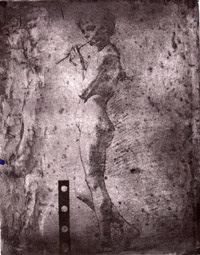- El motivo es un óleo de Mariano Fortuny de unos 15 cm de alto.
- La barra agujereada del primer plano, es un añadido mío para significar mi autoria.
Otros Idiomas
INGLÉS
I apologize for the translation, which although not reliable, it serves.
The reason for this is an oil painting of Mariano Fortuny , about 15 cm high. The bar hollow in the foreground, , is an added mine to mean my authorship.
Aleman
Entschuldigen Sie DIE ÜBERSETZUNG, WENN AUCH NICHT ZUVERLÄSSIG, ja dient.
Der Grund ist ein óleo von Mariano Fortuny ca. 15 cm hoch. Der Dorn im Vordergrund , ist ein Zusatz für mein mein autoria bedeuten.
Frances
Le motif est un óleo de Mariano Fortuny d'environ 15 cm de haut. La barre du premier plan perpendiculaire au sol, est un ajoutée mien pour signifier mon autoria.
Italiano
Il motivo è un olio Mariano Fortuny di circa 15 cm di altezza. La barra del primo piano, è un'aggiunta mio per significare il mio autoria.
Otros Colores
Se muestra el grabado en Sepia verdoso:
 |
| 511, niño tocando. Sepia Verdoso. |










